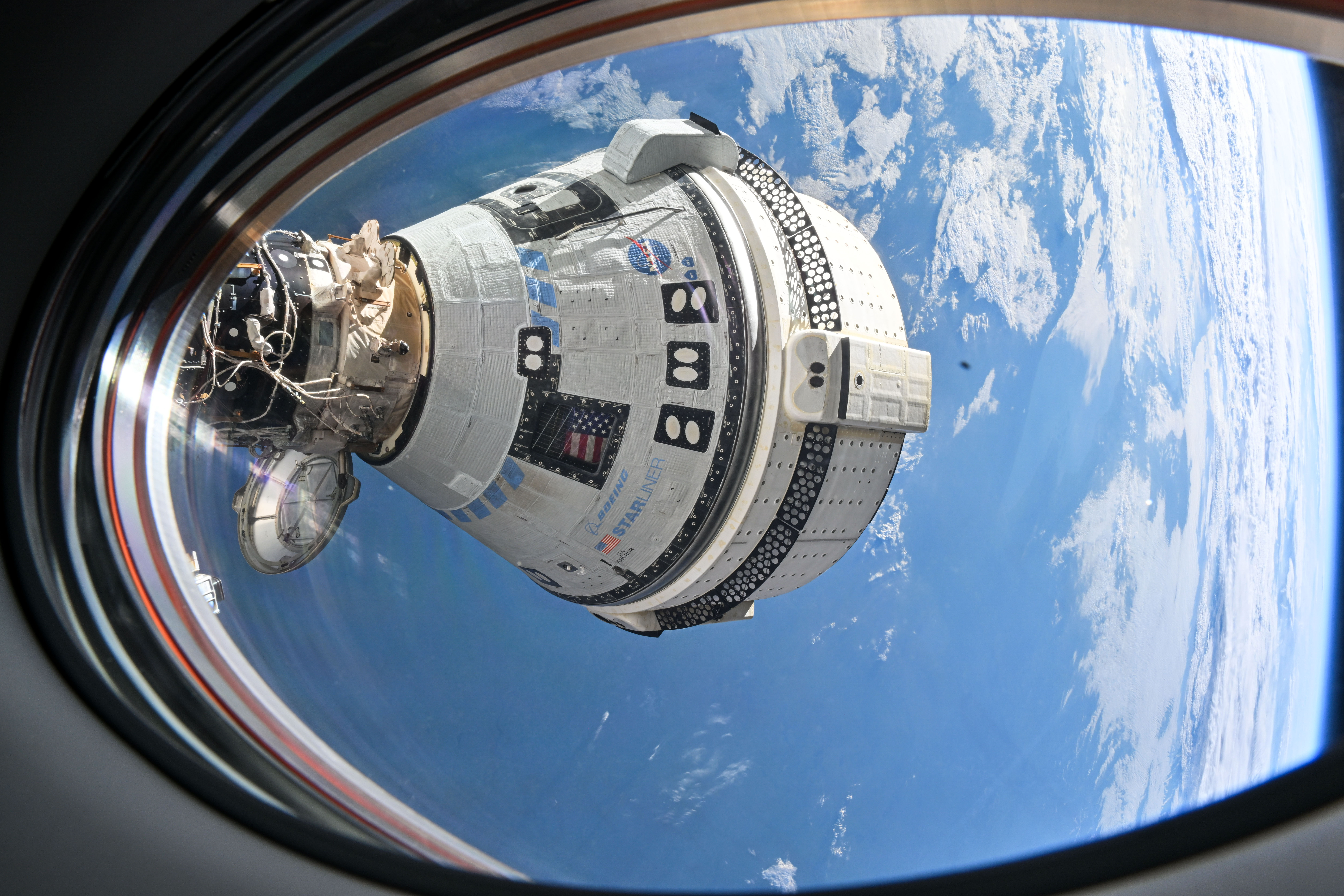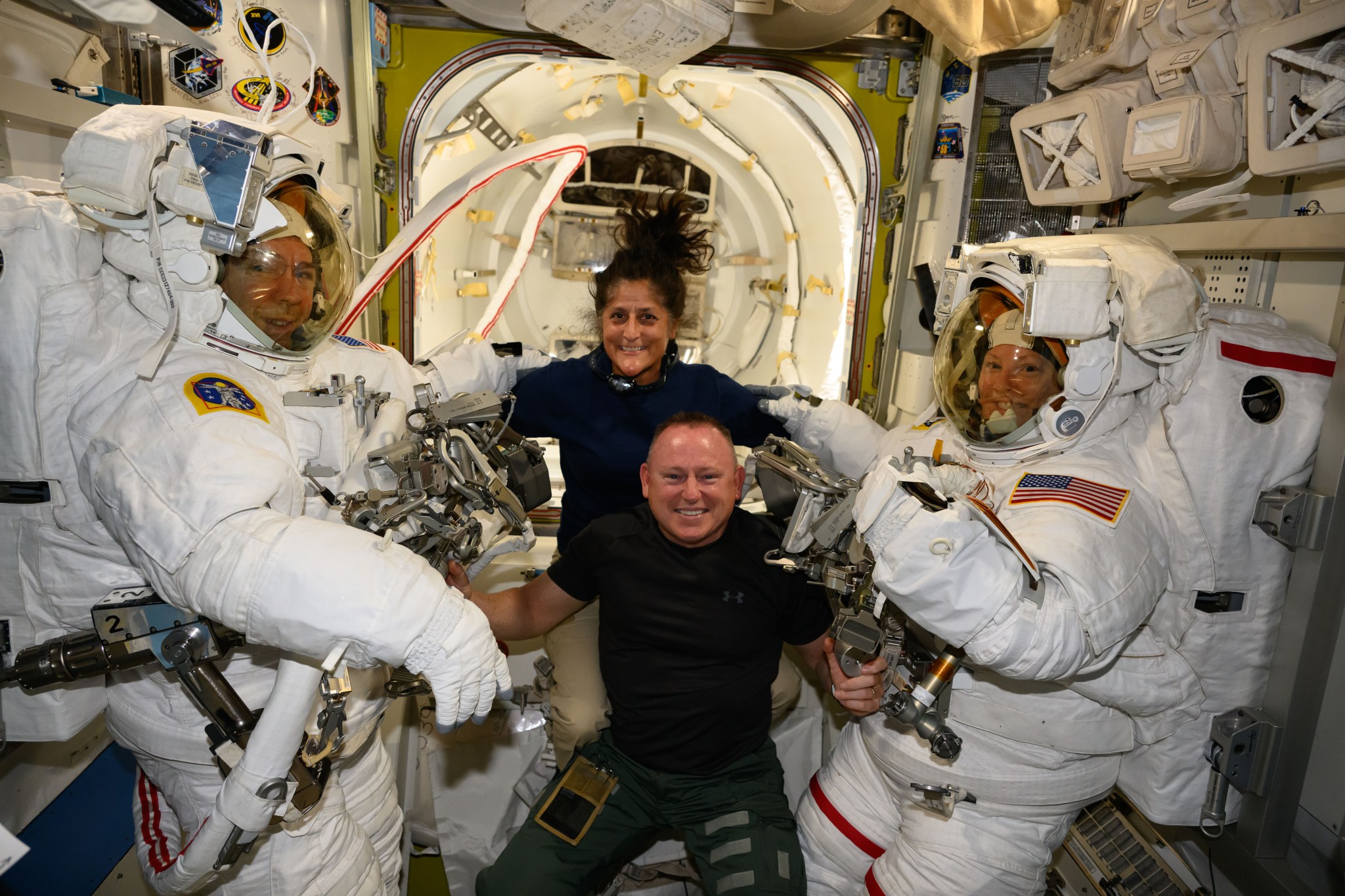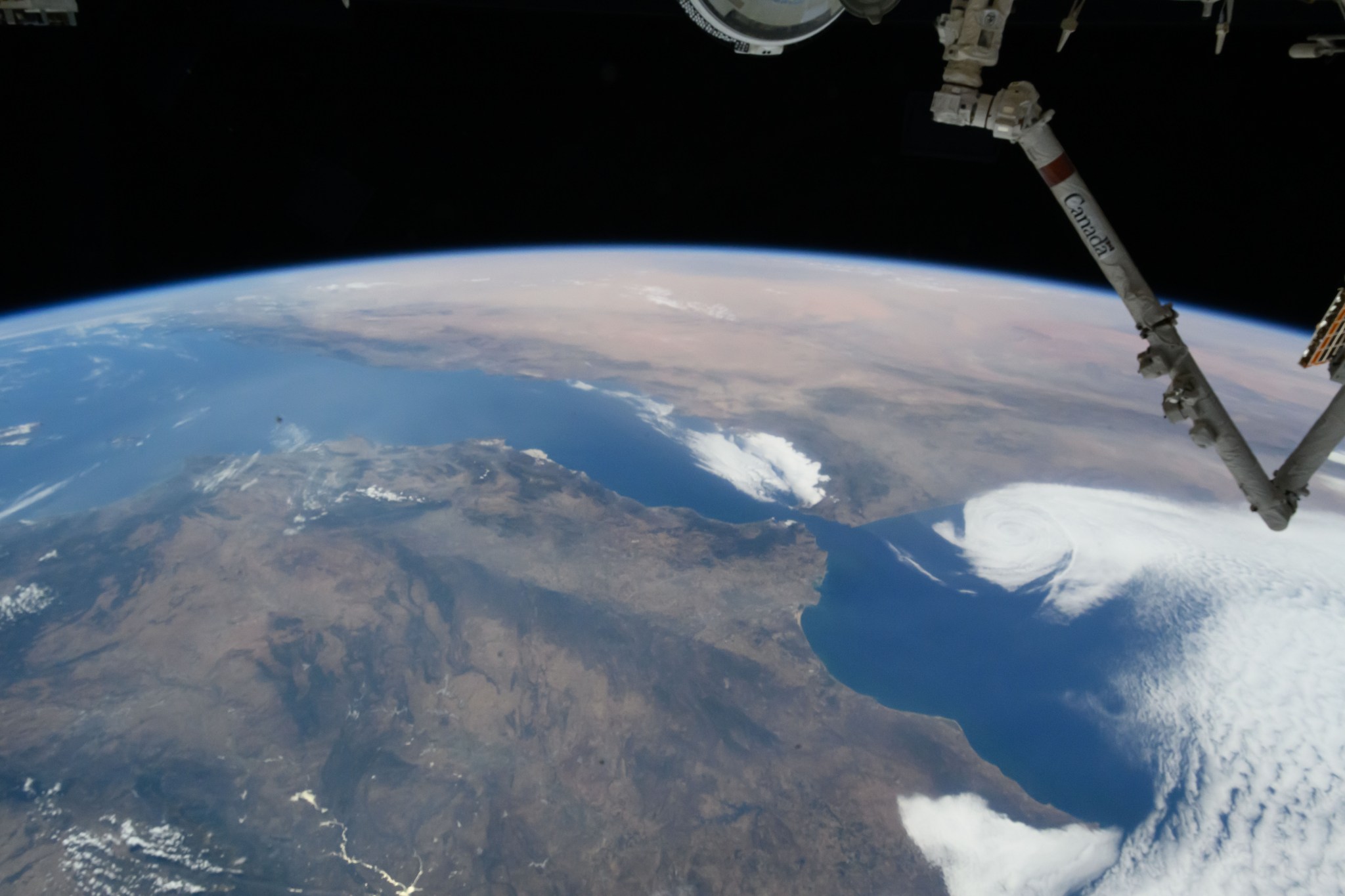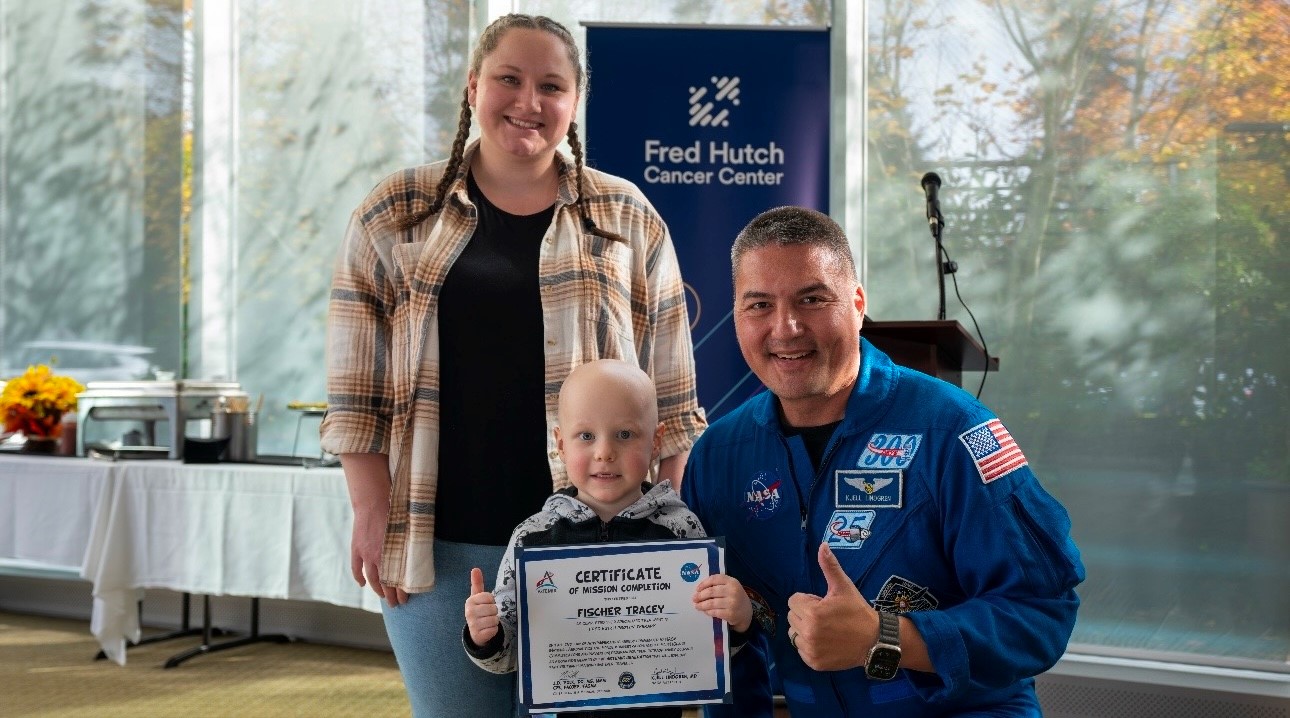FAQ: NASA’s Boeing Crew Flight Test Return Status
Editor’s note: This article was updated Aug. 20, 2024, to reflect the latest information from NASA’s Office of Communications. NASA astronauts Butch Wilmore and Suni Williams arrived at the orbiting laboratory on June 6 aboard the Boeing Starliner after lifting off on June 5 from Space Launch Complex-41 at Cape Canaveral Space Force Station in […]

7 min read
Preparations for Next Moonwalk Simulations Underway (and Underwater)
Editor’s note: This article was updated Aug. 20, 2024, to reflect the latest information from NASA’s Office of Communications.
NASA astronauts Butch Wilmore and Suni Williams arrived at the orbiting laboratory on June 6 aboard the Boeing Starliner after lifting off on June 5 from Space Launch Complex-41 at Cape Canaveral Space Force Station in Florida.
During Starliner’s flight to the space station, engineers noticed some of the spacecraft’s thrusters did not perform as expected and several leaks in Starliner’s helium system also were observed. Engineering teams at NASA and Boeing have since conducted several thruster tests and in-depth data reviews to better understand the spacecraft. While engineers work to resolve technical issues before Starliner’s return to Earth, the astronaut duo have been working with the Expedition 71 crew, performing scientific research and maintenance activities.
NASA now plans to conduct two reviews – a Program Control Board and an Agency Flight Readiness Review – before deciding how it will safely return Wilmore and Williams from the station. NASA expects to decide on the path forward by the end of August.
Here are some frequently asked questions about their mission.
About the Mission and Delay
What is NASA’s Boeing Crew Flight Test?
NASA’s Boeing Crew Flight Test launched on June 5, and is the first flight of the Starliner spacecraft to the International Space Station with astronauts. The flight test aims to prove the system is ready for rotational missions to the space station. NASA wants two American spacecraft, in addition to the Roscosmos Soyuz spacecraft, capable of carrying astronauts to help ensure a permanent crew aboard the orbiting complex.
What are the goals of the Crew Flight Test?
This flight test aims to demonstrate Starliner’s ability to execute a six-month rotational mission to the space station. The flight test objectives were developed to support NASA’s certification process and gather the performance data needed to evaluate readiness ahead of long-duration flights.
Why is the Crew Flight Test staying longer than planned aboard the space station?
During Starliner’s flight to the space station, some of the spacecraft’s thrusters did not perform as expected and several leaks in Starliner’s helium system were observed. While the initial mission duration was planned for about a week, there is no rush to bring crew home, so NASA and Boeing are taking additional time to learn about the spacecraft. This is a lesson learned from the space shuttle Columbia accident. Our NASA and Boeing teams are poring over data from additional in-space and ground testing and analysis, providing mission managers data to make the best, safest decision on how and when to return crew home.
If there’s an emergency on the space station, how will Butch and Suni get home?
Starliner remains the primary option for Butch and Suni if an emergency occurs and they need to rapidly depart the station. There is no urgent need to bring them home, and NASA is using the extra time to understand the spacecraft’s technical issues before deciding on a return plan.
How long could Butch and Suni stay on the space station if they don’t come home on Starliner?
If NASA decides to return Starliner uncrewed, Butch and Suni would remain aboard station until late-February 2025. NASA would replan the agency’s SpaceX Crew-9 mission by launching only two crew members instead of four in late September. Butch and Suni would then return to Earth after the regularly scheduled Crew-9 increment early next year.
Are Butch and Suni staying in space until 2025?
No decisions have been made. NASA continues to evaluate all options as it learns more about Starliner’s propulsion system. Butch and Suni may return home aboard Starliner, or they could come back as part of the agency’s SpaceX Crew-9 mission early next year.
Can Starliner fly without astronauts?
Yes, Starliner can undock and deorbit autonomously, if NASA decides to return the spacecraft uncrewed.
Could NASA send a SpaceX Dragon to bring Butch and Suni back?
If NASA decides to return them aboard a SpaceX Dragon, NASA will replan its SpaceX Crew-9 mission by launching only two crew members in late September instead of four. Butch and Suni would then return to Earth after the regularly scheduled Crew-9 increment early next year.
Why does NASA need two crew transportation systems?
The main goal of the agency’s Commercial Crew Program is two, unique human spaceflight systems. Should any one system encounter an issue, NASA still has the capability to launch and return crew to ensure safety and a continuous human presence aboard the International Space Station.
About the Astronauts
Are Butch and Suni stuck on the space station?
No, Butch and Suni are safe aboard the space station working alongside the Expedition 71 crew. They also have been actively involved in Starliner testing and technical meetings. Butch and Suni could return home aboard Starliner if an emergency arises. The agency also has other return options available, if needed, for both contingency and normal returning planning.
Are Suni and Butch prepared for a longer stay on the station?
Butch and Suni each have previously completed two long-duration stays aboard the station. NASA astronauts embark on missions fully aware of the various scenarios that may become reality. This mission is no different, and they understood the possibilities and unknowns of this test flight, including being aboard station longer than planned.
How long would an extended stay for Butch and Suni compare to other space station mission lengths?
A typical stay aboard the International Space Station is about six months, and NASA astronauts also have remained on the space station for longer duration missions. Previous missions have given NASA volumes of data about long-duration spaceflight and its effects on the human body, which the agency applies to any crew mission.
Do the astronauts have what they need (e.g., food, clothing, oxygen, personal items, etc.)?
Yes. The International Space Station is well-stocked with everything the crew needs, including food, water, clothing, and oxygen. Additionally, NASA and its space station partners frequently launch resupply missions to the orbiting complex carrying additional supplies and cargo.
Recently, a Northrop Grumman Cygnus spacecraft carrying 8,200 pounds of food, fuel, supplies, and science and a Progress resupply spacecraft carrying three tons of cargo arrived at the station. NASA has additional SpaceX resupply missions planned through the end of 2024.
What are they doing aboard the space station?
The crew continues to monitor Starliner’s flight systems and gather performance data for system certification. NASA also is taking advantage of Butch and Suni’s extra time aboard the orbital laboratory, where they have completed various science experiments, maintenance tasks, and assisted with spacewalk preparations. Some of the science they’ve recently completed includes new ways to produce fiber optic cables and growing plants aboard the orbiting complex.
Can they talk to their family and friends?
Butch and Suni enjoy many of the same comforts we have here on Earth. They can email, call, and video conference with their family and friends when they have “free time” aboard the International Space Station.
About the Return Plan
What are the other options for bringing Butch and Suni back?
NASA has two unique American space transportation systems capable of carrying crew to and from station. Although no decisions have been made, NASA is considering several options to return Butch and Suni from the space station, including returning aboard Starliner, if cleared, or as part of agency’s SpaceX Crew-9 mission in February 2025.
Is it safer to bring them home aboard a SpaceX Dragon?
Crewed test flights are inherently risky, and although rotation missions may seem routine, they also are not without risk. It is NASA’s job to evaluate that risk and determine whether it is acceptable for crew ahead of each flight.
What other steps is NASA taking to bring them home?
NASA adjusted SpaceX Crew-9 launch and the agency’s SpaceX Crew-8 return, allowing more time to finalize Starliner return plans. NASA also is looking at crew assignments to ensure Butch and Suni can return with Crew-9, if needed.
For NASA’s blog and more information about the mission, visit: https://www.nasa.gov/commercialcrew
What's Your Reaction?



















.jpg?#)



































